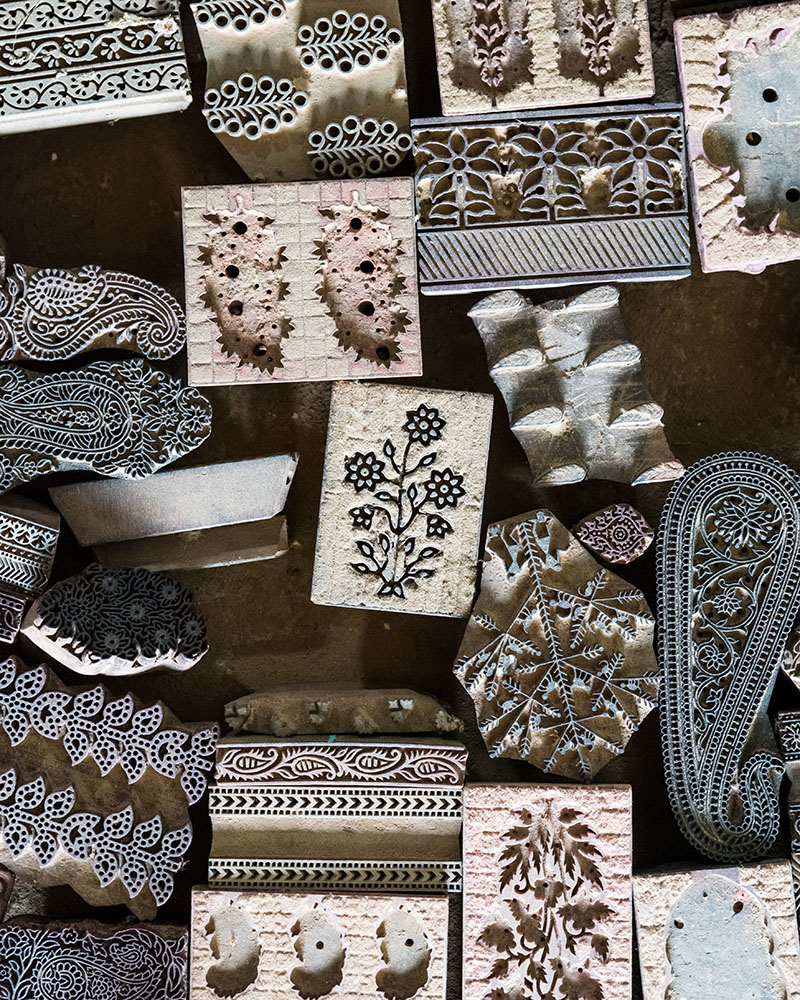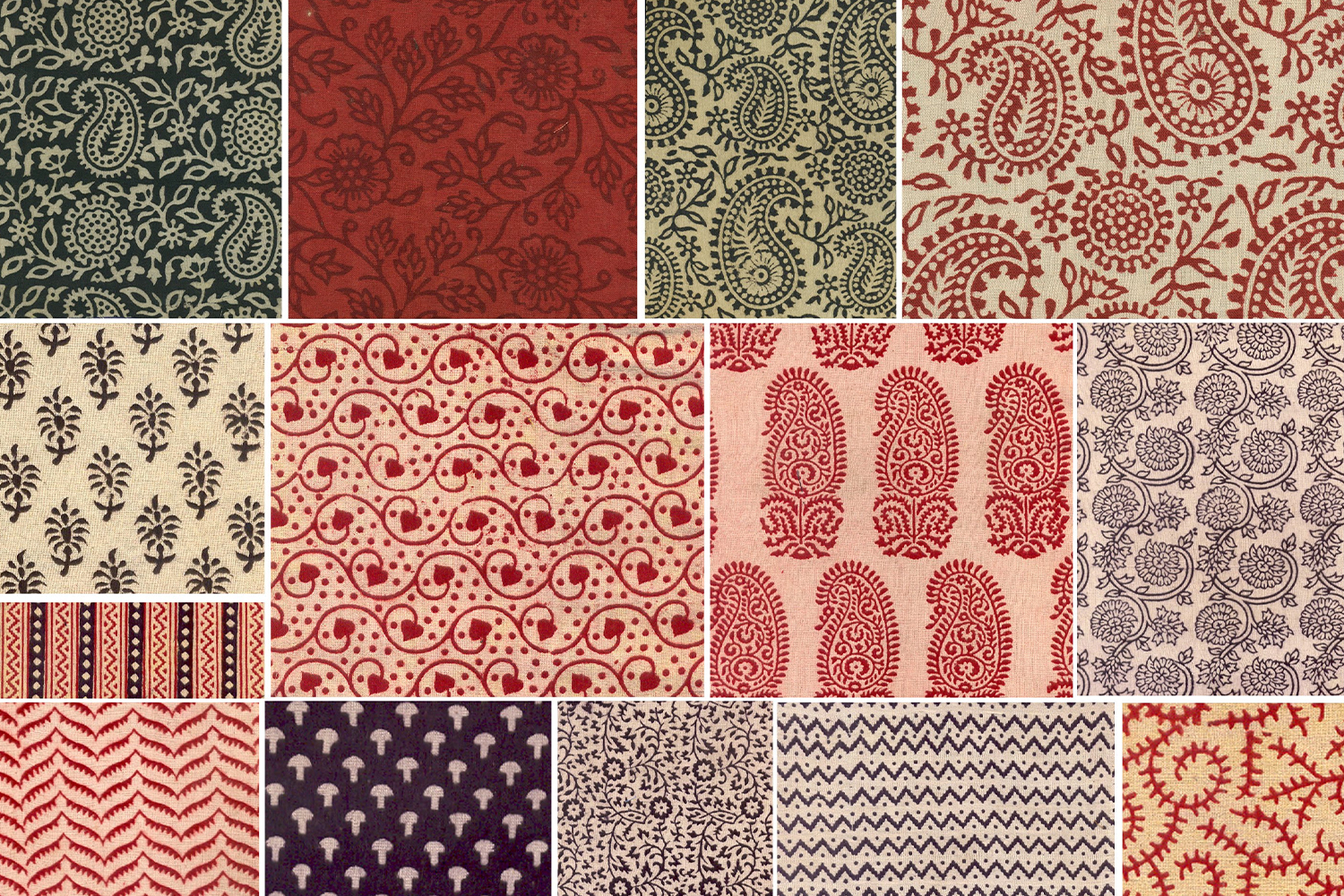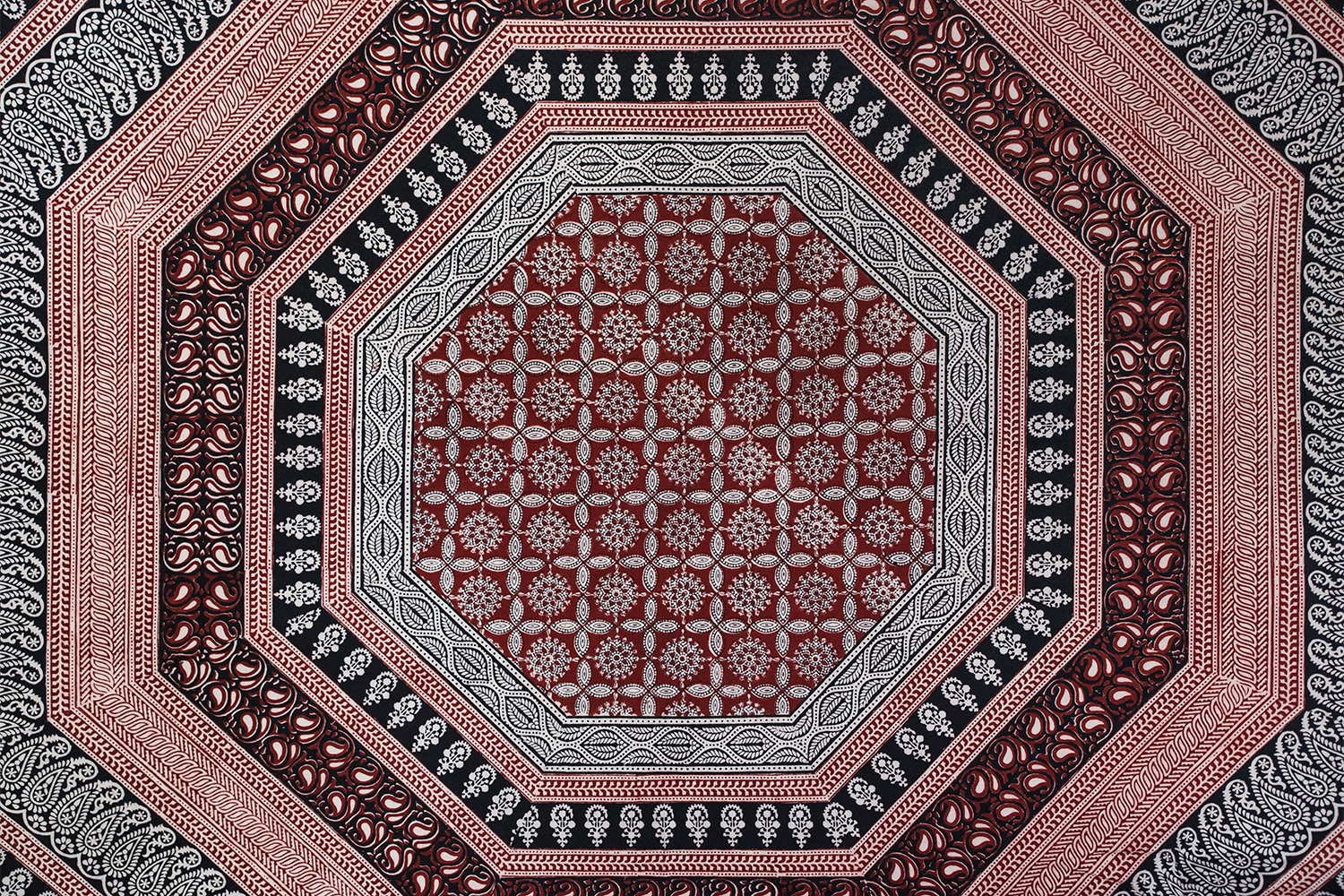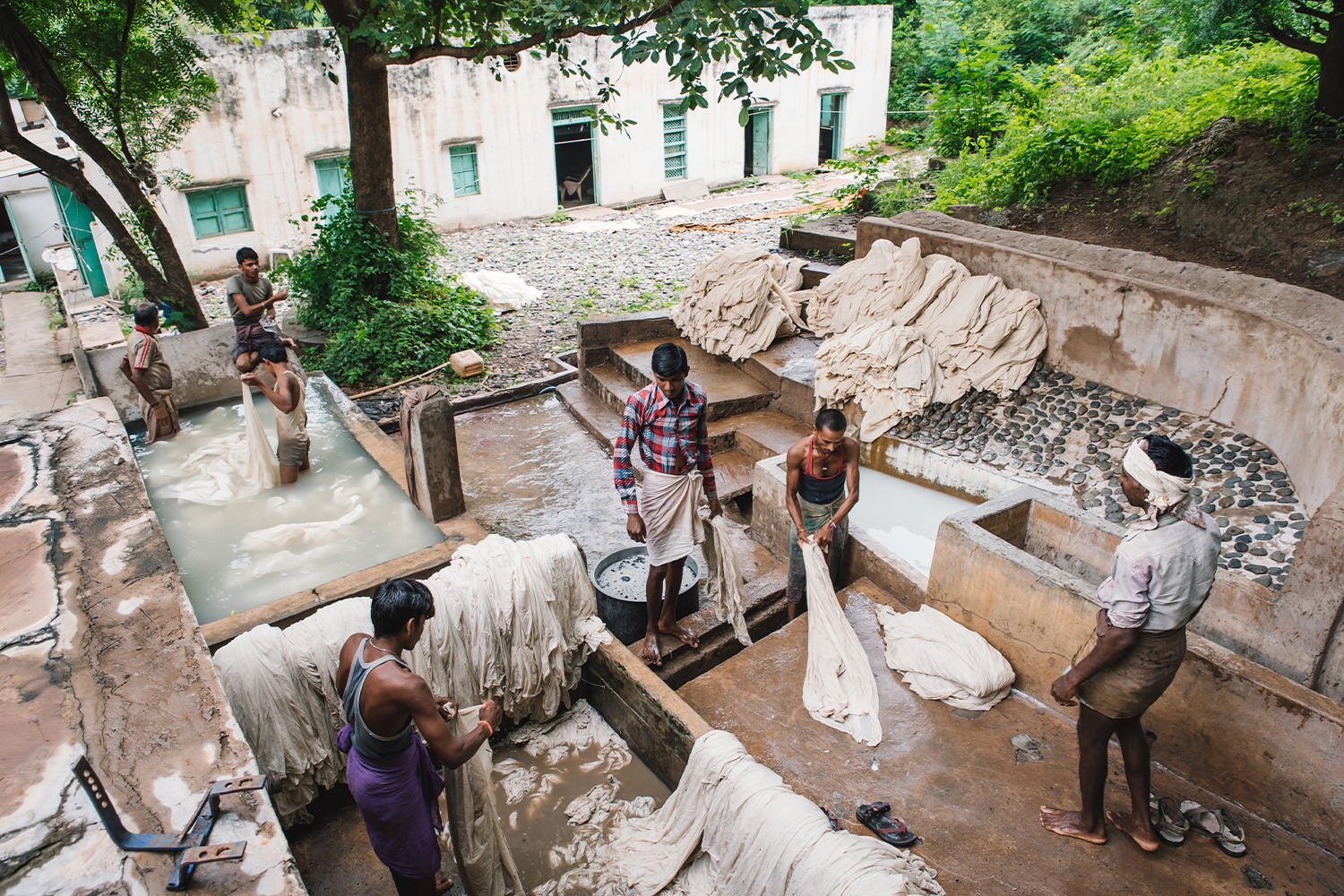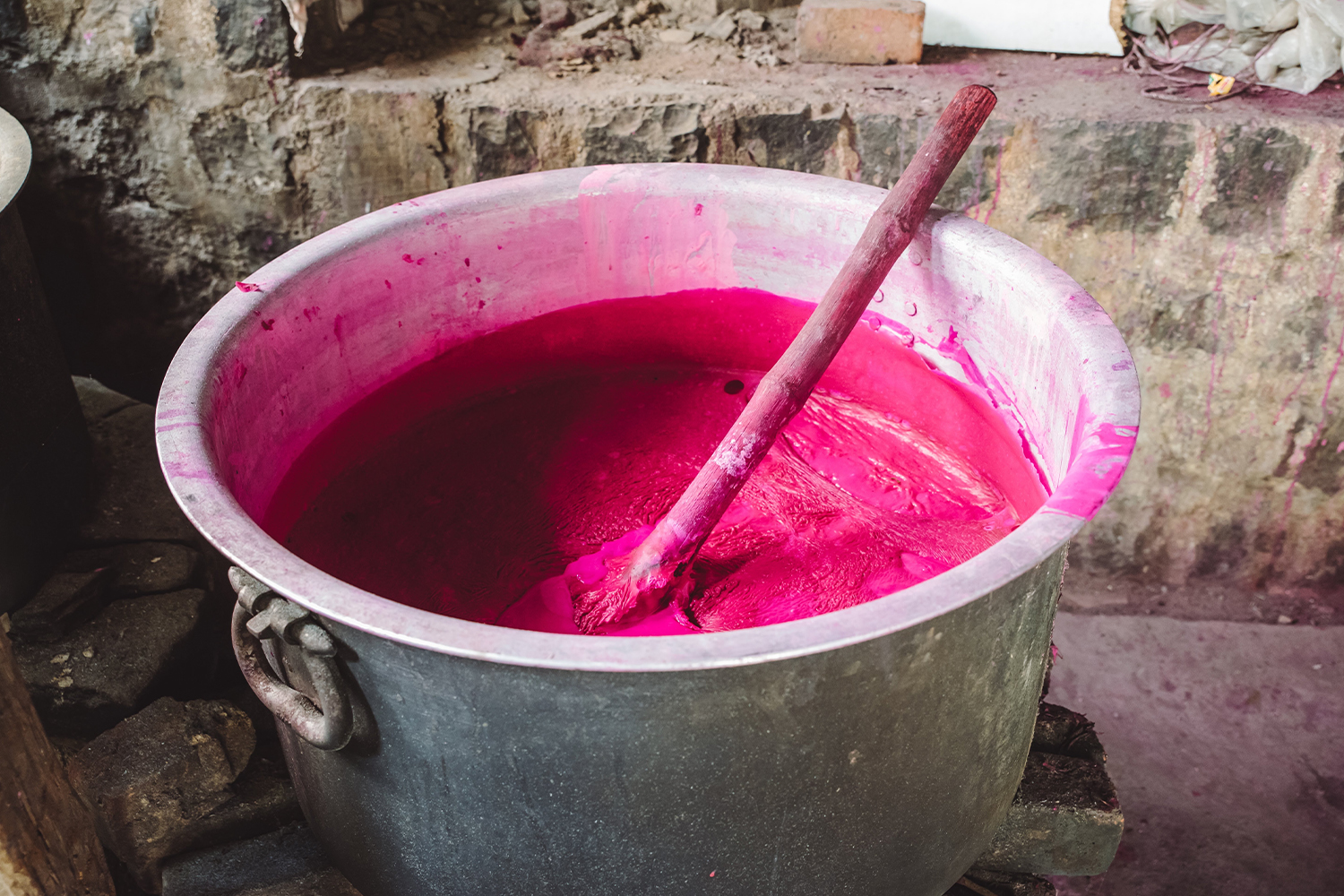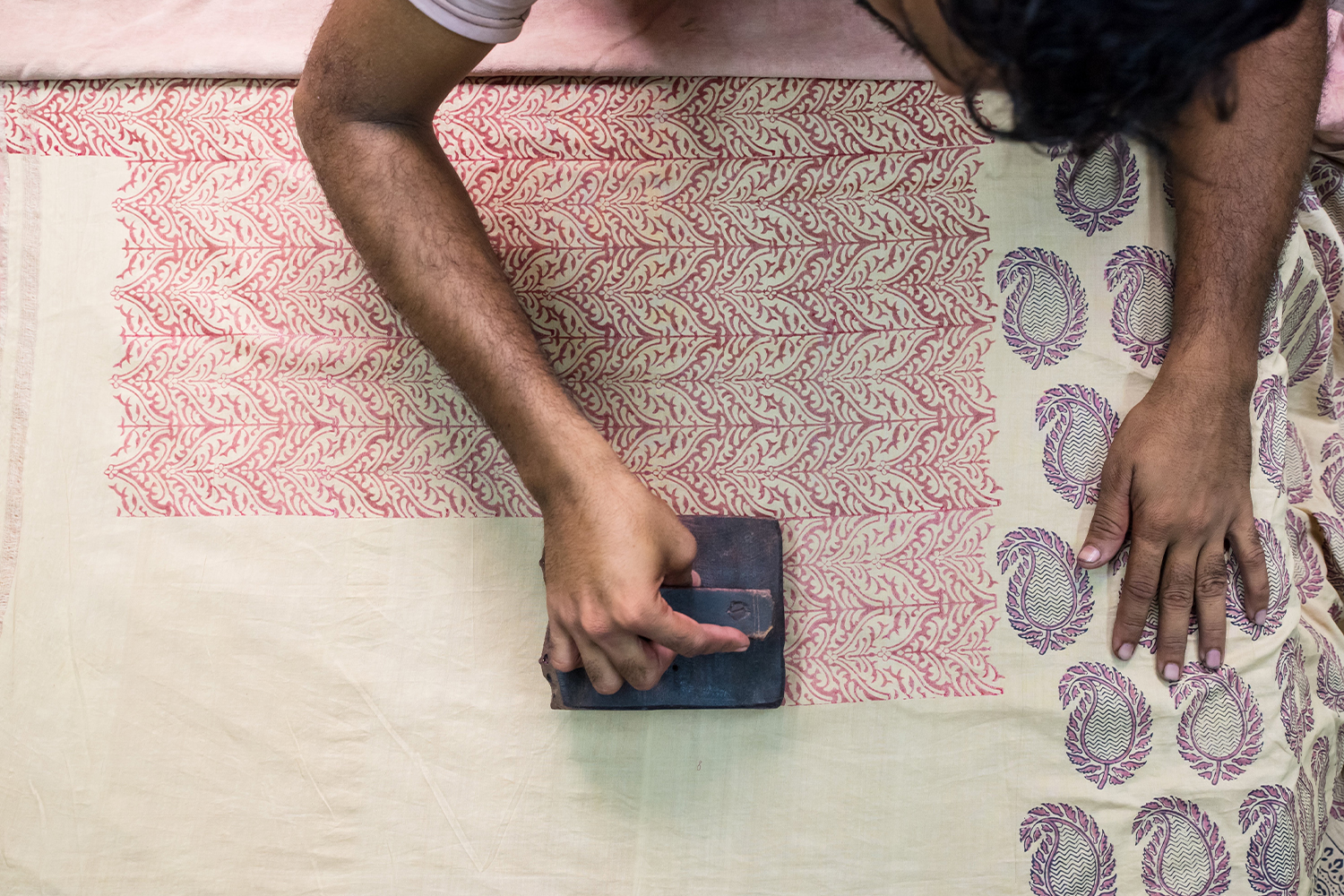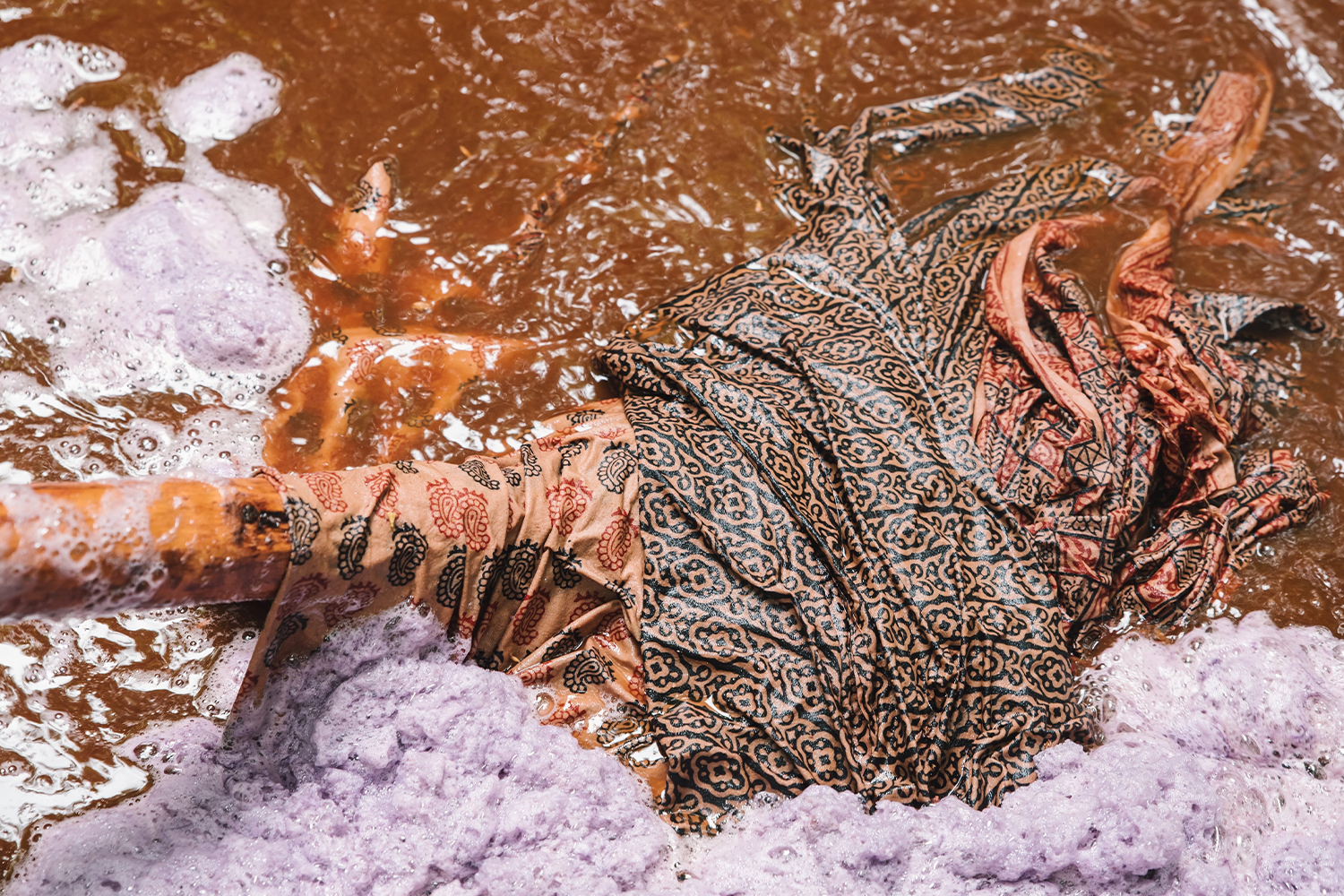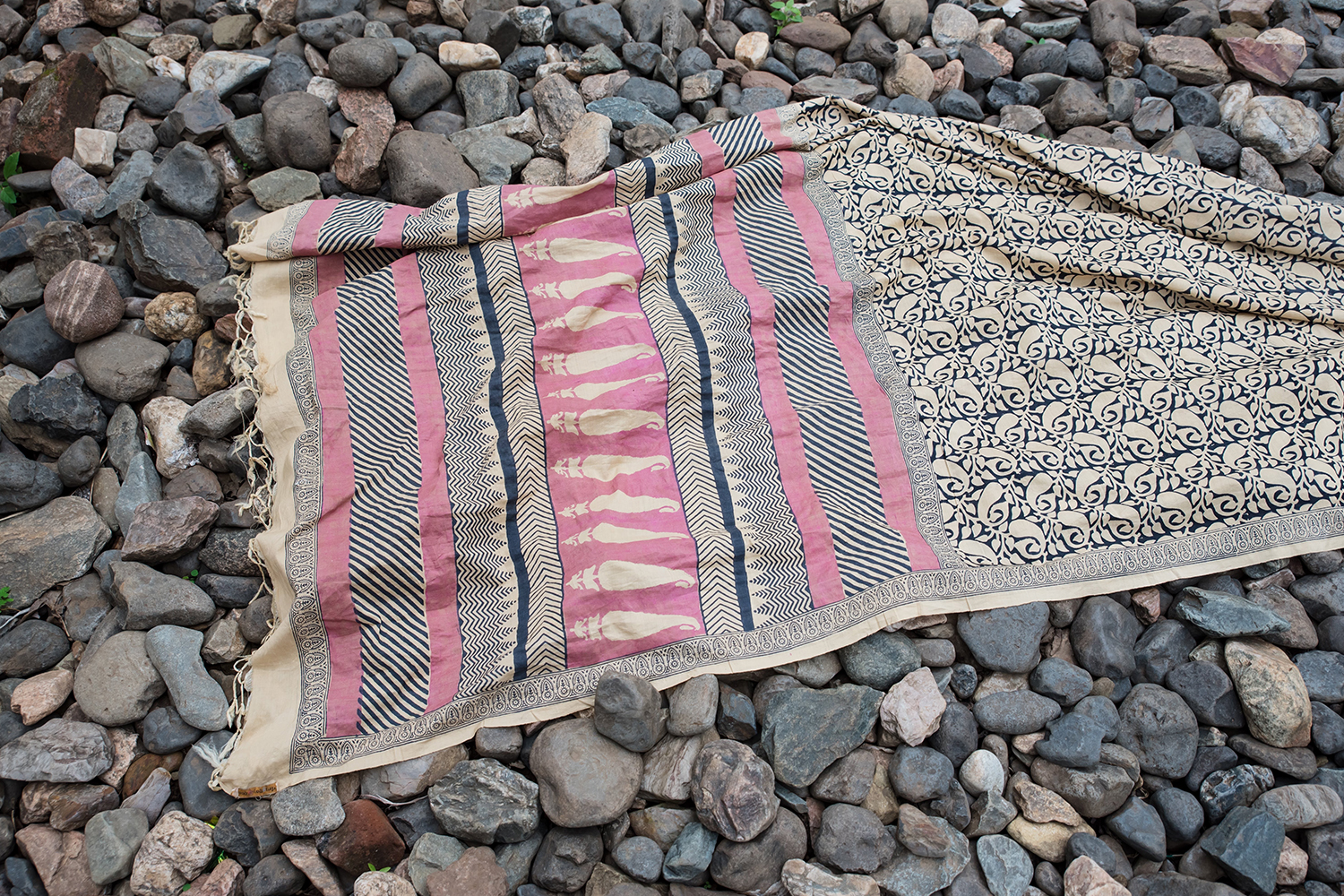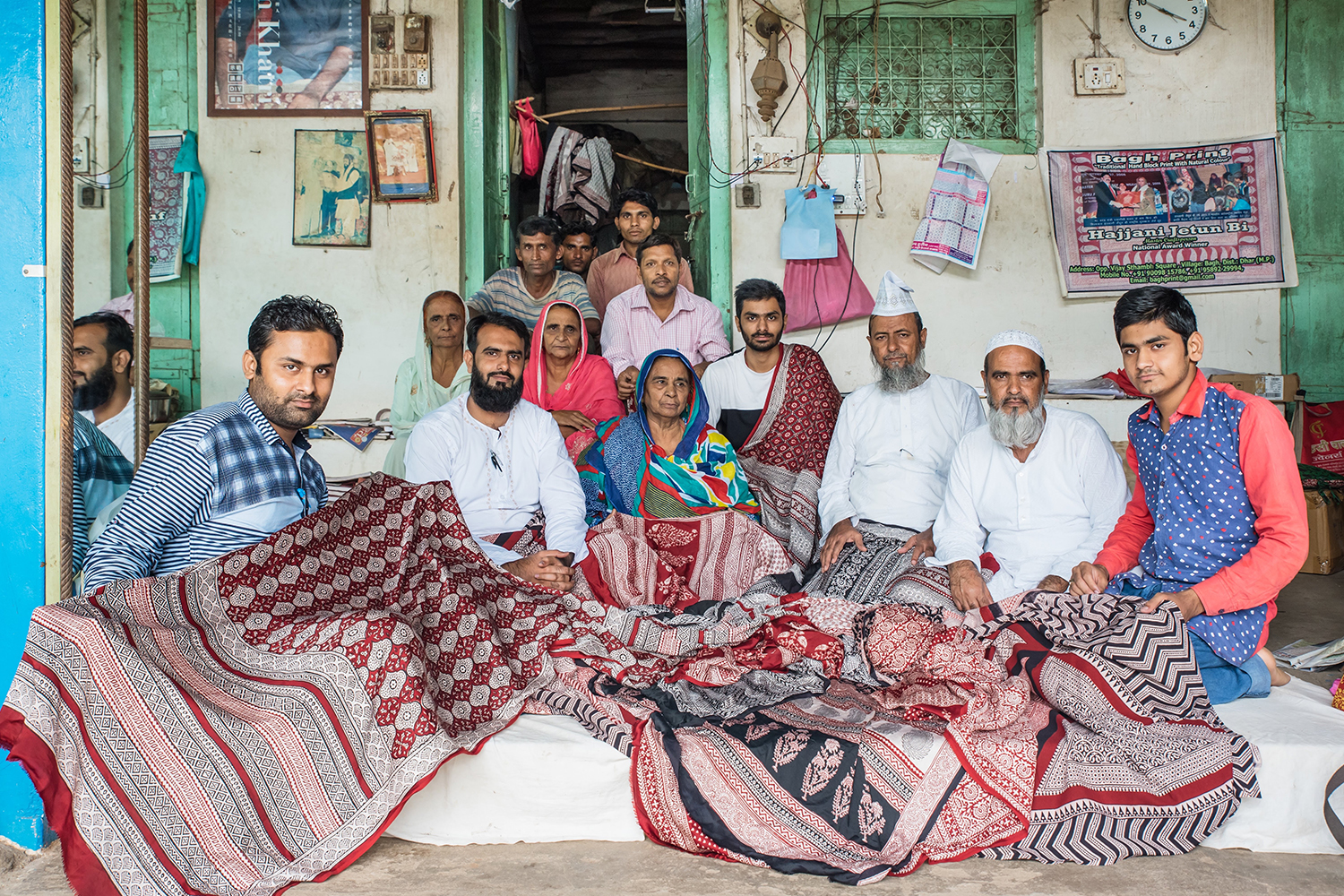ARTICLE
Bagh Print
The process of making Bagh prints is laborious and demands great attention to detail. In preparation for printing, the fabric is soaked in water overnight, dried and then dipped in a mixture of goat droppings, sanchiri, castor oil and water. It is then dried, washed, dried again and laid atop low tables in front of a karigar seated on the floor.
The karigar’s work begins with printing the outline, followed by filling it in with colours and details. The red and black designs are printed in separate stages, allowing the natural dye to dry before the next layer of the design or colouring is applied. Red dyes are made from Aal (Morinda citrifolia), with alum functioning as a mordant, while black dyes are made by combining iron filings and jaggery. A paste made of tamarind seeds is typically used as a binding agent.
Once dried for ten days, the fabric is taken to the river, where it is washed and beaten against rocks to soften it and remove excess dye — a process known as vichaliya — after which it is laid out to dry on the banks. The dye is then fixed and the reds are deepened by boiling the cloth for a couple of hours in a solution of alizarin and local dhawda flowers. In a final step, the fabric is washed once again in large tanks known as haudis and then laid out to dry.
Threatened to the point of extinction by the advent of synthetics and rapidly changing lifestyles, Bagh printing was kept alive and subsequently contemporised by the efforts of a few prominent Khatri families. An award-winning duo, the late Ismail Suleiman Khatri, and his wife Hajjani Jetun Bi, are master karigars who have been credited with keeping the printing tradition alive in Bagh. Their five sons are all acclaimed karigars who continue to practise and popularise the craft, adapting their designs to suit contemporary aesthetic sensibilities. Among them, Mohammed Yusuf Khatri is prominent for his role in preserving the craft and improving the local economy by training the local non-Khatri artisans in Bagh block-carving and printing, and by expanding the design repertoire and introducing them to a larger market in the form of sarees, stoles and home linen. The next generation of Khatris have carried on this work, extending training and experimenting with materials such as reed mats to ensure the relevance and sustainability of this block-printing tradition.
In 2008, Bagh prints from Madhya Pradesh received Geographical Indication (GI) status from the Government of India for their territory-specific production and characteristics.
Bibliography
Our website is currently undergoing maintenance and re-design, due to which we have had to take down some of our bibliographies. While these will be re-published shortly, you can request references for specific articles by writing to hellomapacademy@map-india.org.




